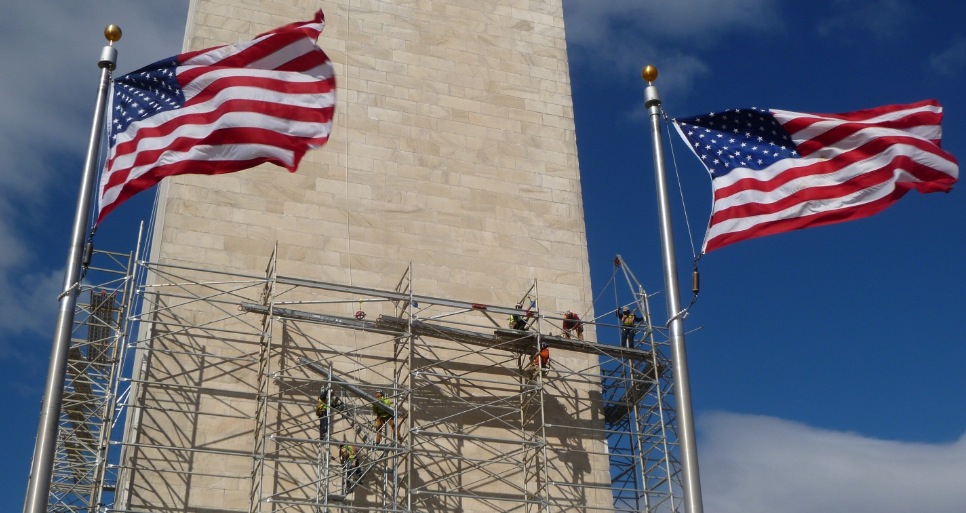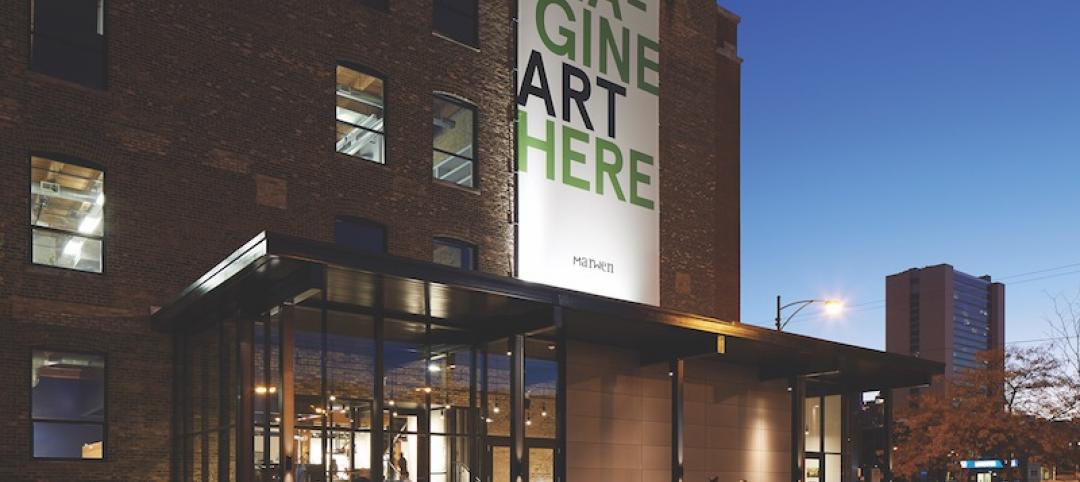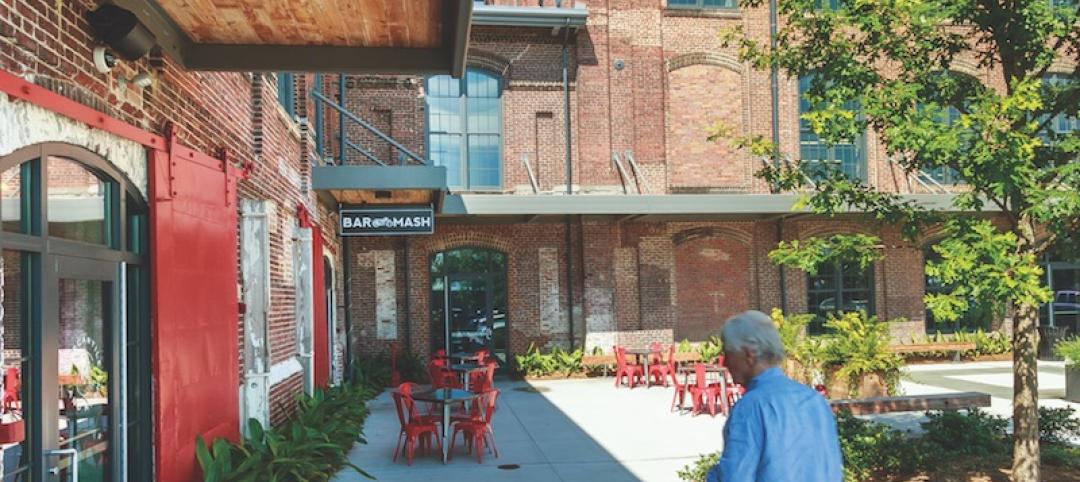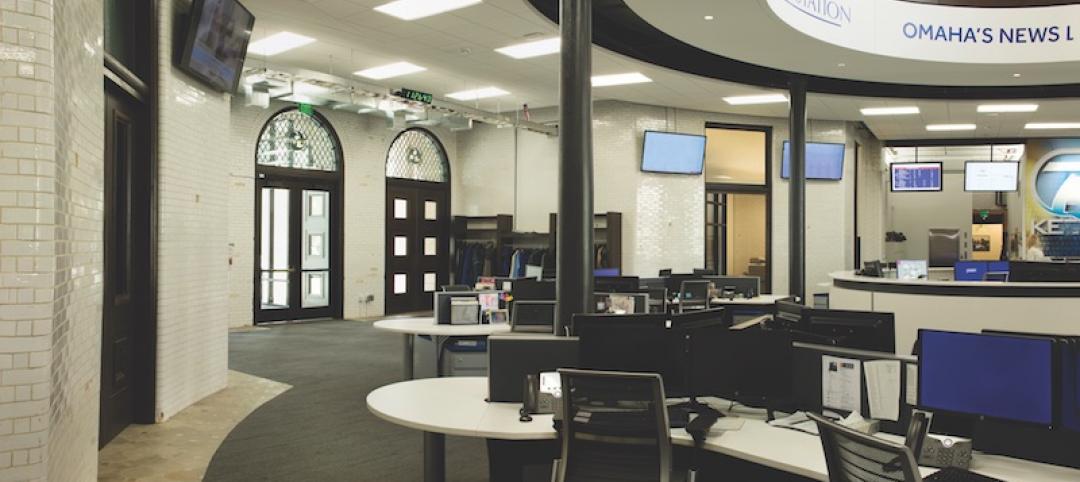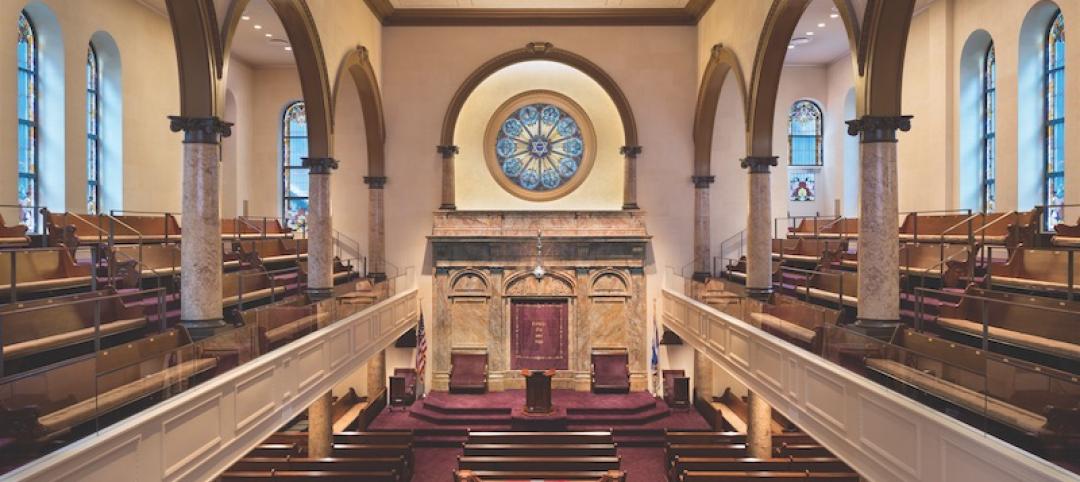On August 23, 2011, a magnitude-5.8 earthquake—the largest temblor east of the Rocky Mountains in more than a century—struck Louisa County, Va., causing significant damage to historic structures in Washington, D.C. Among the most severely affected was the Washington Monument. Cracks formed in the century-old stone at the top of the monument, and water damage was discovered inside the monument after Hurricane Irene hit the area later that month.
BRONZE AWARD
Building Team: Hill International (submitting firm, CM); National Park Service (owner); Wiss, Janney, Elstner Associates (architect); Tutor Perini (GC)
General Information: Size: 93,408 sf.
Construction cost: $11.3 million. Construction time: November 2011 to May 2014.
Delivery method: Design-bid-build
This restoration and repair project, which was completed under budget and eight days early (despite several setbacks), involved re-pointing 2.5 miles of mortar joints, repairing 1,200 linear feet of cracks, and installing 150 sf of Dutchman repairs.
For the initial damage assessment, a team of engineers rappelled down the outside of the monument and documented the damage using iPads. Once the scaffolding was installed, the team conducted more thorough reviews from the 490-foot level to the top of the monument, where the majority of the damage had occurred.
To keep costs within budget, the team carefully measured the unit price repairs and determined which were crucial and which were not. Available funding was reallocated to pay for scope additions that were deemed essential. The team also established uniform standards to serve as a baseline for repairs throughout the monument.
This process eliminated unnecessary aesthetic repairs, prevented scope creep, and ensured lasting repairs.
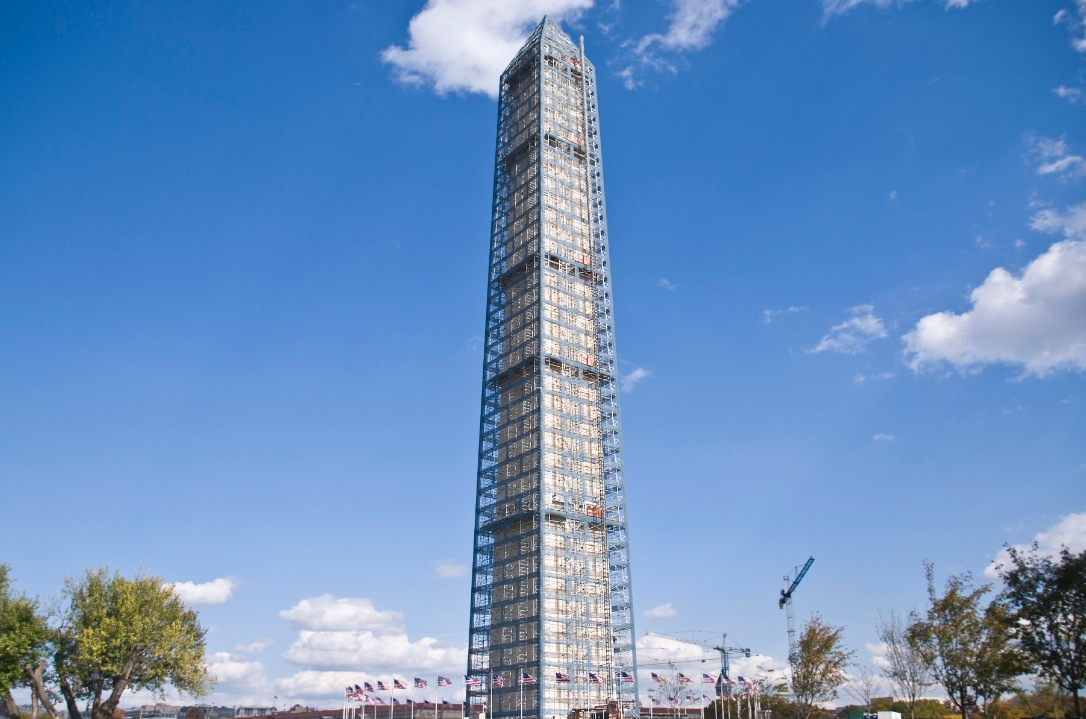
Related Stories
Reconstruction Awards | Nov 16, 2016
Reconstruction Awards: Bay Area Metro Center
The structure’s 60,000-sf floor plates made the interior dark and foreboding, and BAHA wanted to improve working conditions for its employees and tenants.
Reconstruction Awards | Nov 16, 2016
Reconstruction Awards: Marilyn I. Walker School of Fine and Performing Arts, Brock University
The five-story brick-and-beam structure is an adaptive reuse of the Canada Hair Cloth Building, where coat linings and parachute silks were once made.
Reconstruction Awards | Nov 16, 2016
Reconstruction Awards: Marwen
Marwen currently offers 100 studio courses to 850 underserved students from 295 schools and 53 zip codes.
Reconstruction Awards | Nov 16, 2016
Reconstruction Awards: The Cigar Factory
The Cigar Factory was originally a cotton mill but became the home of the American Cigar Company in 1912.
Reconstruction Awards | Nov 16, 2016
Reconstruction Awards: St. Patrick's Cathedral
The cathedral, dedicated in 1879, sorely needed work.
Reconstruction Awards | Nov 15, 2016
Reconstruction Awards: Lovejoy Wharf
After demolishing the rotten wood wharf, Suffolk Construction (GC) built a new 30,000-sf landscaped quay, now known as Lovejoy Wharf.
Reconstruction Awards | Nov 15, 2016
Reconstruction Awards: KETV-7 Burlington Station
The 1898 Greek Revival train terminal, which was listed on the National Register of Historic Places in 1974, had been abandoned for nearly four decades.
Reconstruction Awards | Nov 14, 2016
Reconstruction Awards: The Gallery at the Three Arts Club
On the exterior of the building, masonry and terra cotta were revitalized, and ugly fire escapes on the south façade were removed.
Reconstruction Awards | Nov 14, 2016
Big-box store rescaled to serve as a preventive-care clinic
The hospital was attracted to the big box’s footprint: one level with wide spans between structural columns, which would facilitate a floor plan with open, flexible workspaces and modules that could incorporate labs, X-ray, ultrasound, pharmacy, and rehab therapy functions.
Reconstruction Awards | Nov 14, 2016
Fire-charred synagogue rises to renewed glory
The blaze left the 110-year-old synagogue a charred shell, its structural integrity severely compromised.


